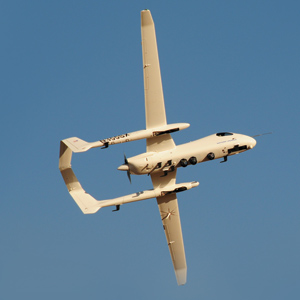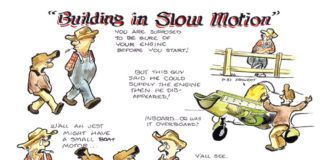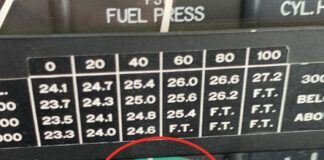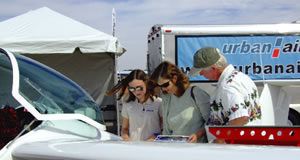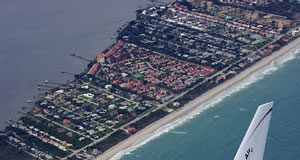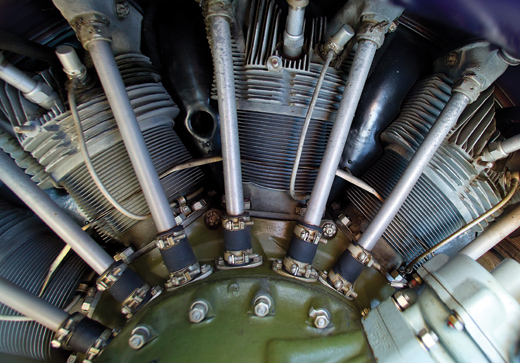
It’s been said before, but it bears repeating: No single big piece of your homebuilt is as worthy of care, concern and caution as the powerplant. (Unless you’re building a sailplane, of course.) Virtually all of the airframe’s systems and characteristics stem from the type and quality of the so-called prime mover. Your decisions will determine the success of your firewall-forward installation, or firewall-aft if you’re a pusher enthusiast.
One of the great benefits of building on your own is the ability to choose the engine (or, more completely, the engine-and-prop combination) that you think is best for your mission. You are not beholden to the whims of the marketing department or the red pen of the FAA. You don’t have to defend the power loading—the amount of aircraft weight each horsepower must loft—to anyone but your accountant and, perhaps, the Designated Airworthiness Representative (DAR) doing the airworthiness-certificate sign-off.
The engine homebuilt-aircraft industry has become increasingly conservative as costs rise and activity diminishes—both artifacts of the difficult economy and, one hopes, temporary in nature. In this particular installment of the Engine Buyer’s Guide, we’ll look at what we call traditional engines, specifically powerplants that were designed from the outset to be used in aircraft. Most of these are traditional in the truest sense of the word—current developments of longstanding engines from either the original manufacturers or through external companies. Next month, look for an industry overview of what we generically call alternative powerplants, or those converted from designs built for purposes other than powering aircraft. These two sub industries are so different, and their consumers are interested in such disparate qualities, that it makes sense to us to treat them individually.
Tough Times, Difficult Market
If you’re shopping for a new engine in 2012, you’ll notice that status quo is the way to go. In other words, where traditional aircraft engines are concerned, not a lot is new. This should not be a surprise. Until general aviation as a whole begins to recover, many of the larger companies are unwilling to invest in expensive development programs only to have the fruits of their labor entered into an historically soft market.
So what you’ll see in brochures at Sun ‘n Fun and AirVenture, and on company web sites, will be familiar names and engines. You’ll buy those familiar engines from familiar companies, too. Currently, there are a few common conduits for an engine purchase. First is through the manufacturer of your airframe kit. Most of the larger companies have so-called OEM (original equipment manufacturer, sometimes shortened to OE) arrangements with the engine makers to sell directly to the consumer. In just about every case, the engines on offer are either totally standard, production-line certified engines or those same engines less the certification paperwork and therefore called Experimental engines. In most cases, these “EXP” engines are exactly the same inside, made up of the same parts and assembled on the same line as the engines heading toward Cessna or Piper.
There are exceptions to this rule, but the biggest divergence from certified/standard form usually involves accessories on the engine and, perhaps, minor variances such as compression ratio. The reason an engine might have an EXP sticker could be that the fuel-injection system fitted is not, itself, certified, or it may be a non-certified version of a design that has passed the certification process. Confused yet? Don’t worry; you’re not alone.
While the general trend has been toward buying an off-the-shelf engine from your kit manufacturer, there remain other viable avenues. It’s worth noting that in the history of homebuilts, builders writing a check for a new, as-certified engine is relatively new, the result of more aggressive pricing by the engine makers and the willingness of the kit creators to take on another revenue stream. An alternative to the factory-fresh engine is to purchase a new engine through an engine shop. If you need a four- or six-cylinder Lycoming model, there’s a strong chance that all of the parts exist outside of the factory to create a whole engine. In the recent past, with Superior Air Parts collapsing under the demise of parent company Thielert, the choices for engine builders were factory Lycoming and Engine Components International (ECi). Now, however, with Superior ramping up production of both new parts and whole engines, independent shops have a wider choice of raw materials to work with. (More on ECi and Superior in a moment.)
A third option is to have an engine built by a professional shop from a combination of new and overhauled components, and this is usually the tack taken for engines not readily available from the factory as parts or from independent parts suppliers. For the most part, this approach applies most commonly to the large Continental engines because the company does not have a formal kit-engine program, though it is happy to sell major components directly to the engine shops. A fourth option is to find a used engine on your own and undertake an inspection and rework as necessary.
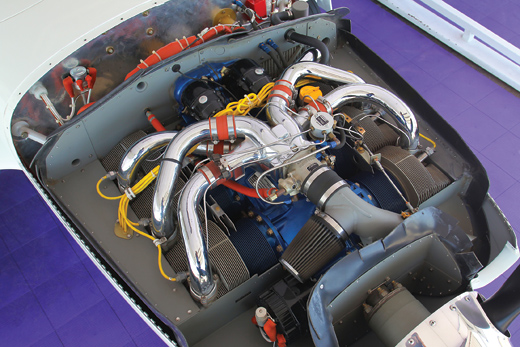
Continental IO-550.
Continental Options
For just about everyone but the guy printing business cards, this is Continental engines, a familiar name to anyone with even 10 minutes in a certified aircraft. The firm’s current lineup spans the range from a 100-horsepower four-cylinder engine up to a 350-hp-plus turbocharged and intercooled 550-cubic-inch flat six. Unlike Lycoming, Continental’s efforts in the Experimental market begin and end with the delivery of factory-standard parts either as a complete engine or to engine shops such a Mattituck Services in Long Island, New York.
Because the bulk of the larger kit aircraft—those needing 150 hp or more—have been designed around four- and six-cylinder Lycomings, Continental designs are in something of a minority, numbers wise. Few builders choose the six-cylinder IO-360, good for up to 210 hp, because the similar four-cylinder Lycoming is lighter and simpler, and has historically been considerably less expensive. So the options for builders of aircraft such as the Lancair Legacy or Velocity are comparatively limited: factory-new Continentals through an OE arrangement or a custom engine from an independent shop.
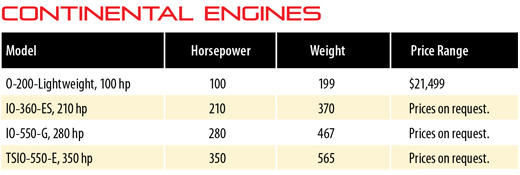
Lycoming/Thunderbolt
Lycoming, in 2005, took the bold step of offering engine kits to independent shops—basically a complete, unassembled engine that could be locally built up. At the same time, it launched Thunderbolt, an in-house program to deliver Experimental engines directly to builders. In the last few years, Lycoming has continued to grow Thunderbolt. Jeff Schans, who heads up the Thunderbolt division, says that, “The program has grown every year since 2006 and actually grew 23% last year.”
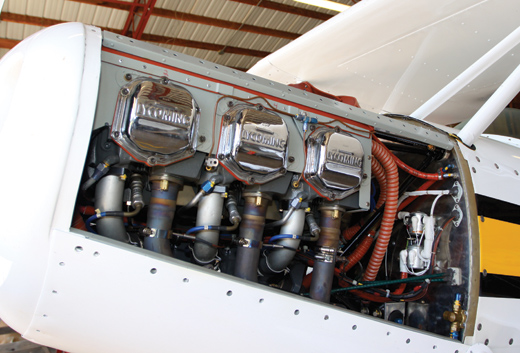
Lycoming IO-540
Since its inception, Thunderbolt has been expanding its offerings. As mentioned above, one option is to buy a non-certified Lycoming from the kit manufacturer—these engines travel down the same assembly line and use the same parts as engines headed toward certified aircraft. Thunderbolt engines as raw components are sent to specialized two-man teams for assembly. Within Thunderbolt are three levels: Signature, Extreme and Competition. Signature engines deviate most visibly in cosmetics. “If a customer sends me a paint swatch, I can match it and paint the engine in that color,” says Schans.
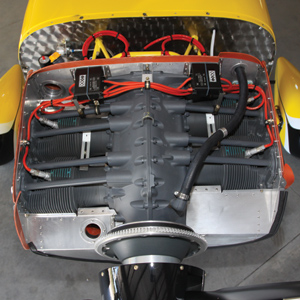
Lycoming O-233.
All Thunderbolt engines, including Signature, currently feature custom porting and polishing, as well as balancing of rotating and reciprocating components to tolerances tighter than are applied to standard engines. The Thunderbolt engine has its pistons matched to within half a gram, Schans says. Beyond Signature, buyers can opt for other upgrades including different compression ratios, ignition systems and induction schemes. One advantage Lycoming carries is a wealth of core components, useful if you need some odd combination of, say, induction location, accessory case and engine-mount strategy.
Ultimately, Lycoming’s ramping up with the Thunderbolt program and an increase in prices for raw components have changed the face of the marketplace. According to Mike Yousik at Mattituck Services, “We no longer offer anything larger than 180 horsepower. The cost of the parts for the larger engines went up so much we could not compete with Lycoming. We do still sell Experimental-class engines from 100 to 180 horsepower. The four-cylinder engines in the 160- to 180-horsepower range are Lycoming clone engines, while the smaller fours are based on all-new Continental parts for the O-200 and O-240.” Yousik’s feeling is that after a soft couple of years, the market is becoming somewhat stronger; specifically, builders are buying many of the same engines and accessories they did in years past but, he feels, they are simply delaying the purchase of the engine for economic reasons. That was bad news in the interim for the engine manufacturers and builders but good news in the longer term for the industry. These customers have not abandoned their projects but simply stretched the timeline to enable them to continue building.
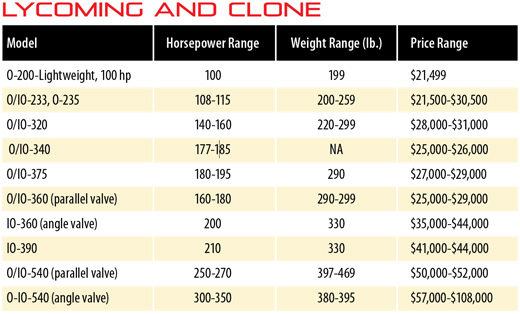
ECi and Superior
Component parts suppliers Engine Components International and Superior Air Parts are the beneficiaries of Lycoming’s recent price increases because they produce components to build whole engines.
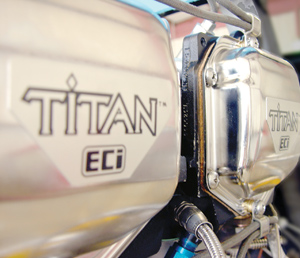
Superior Air Parts continues its return to form in 2012. For the Average Joe, Superior is “doing a brisk business” in XP-360 parallel-valve engines. In the last two years, the company has gradually restarted production of the core components needed to build the engines and is now able to create whole engines from its parts shelves. According to Director of Operations Bill Blackwood, Superior had 15 ship sets of XP-360 engines ready to go in early January with plans to beef up the production line in coming months. “We’ve been busy,” he says, “and demand is good for the XP-360. We are offering a wide range of parts and can build engines here [in Texas] as well.”
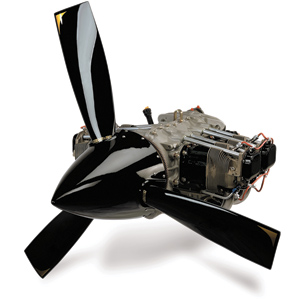
Superior XP-408AC.
This version of the XP-360 is much the same as the base engine Superior produced through the mid-2000s, available in 180-hp form with an 8.5:1 compression ratio, 170-hp in a low-octane 7.2:1 compression version and a 9.0:1 compression-ratio engine making 185 hp.
Superior’s gradual return to the business has been a boon for independent shops that prefer multiple sources for raw materials, and it offers another option to aircraft builders. The company says it is focused on gradual, sustainable growth under Chinese ownership.
Meanwhile at ECi, myriad versions of its Titan EXP engine remain in production. These range from a 154-hp OX-320 up through ECi’s unique “stroker” engine—a 4.125-inch stroke to go with the standard 320/360’s 5.125-inch bore, netting 340 cubic inches—and up to the IOX-360 parallel-valve-head four-cylinder. As expected, these engines are available with differing compression ratios yielding different outputs—all except the 340, that is, which is offered with the middle 8.3:1 compression ratio, netting 177 hp with a carburetor and 185 with fuel injection.
Rotax
This line of Austrian engines remains a favorite among the Light Sport Aircraft set for two good reasons squeezed into one equation: power to weight. The liquid-cooled, geared-drive Rotax 912S produces an even 100 hp, with the core engine weighing a claimed 125 pounds. With an exhaust system and radiator in place, the claimed installed weight is 141 pounds. The closest engine in this weight class is some 60 pounds heavier, a big deal on the nose of a very light airplane restricted to a max 1320 pounds or, at best as a seaplane, 1430 pounds.
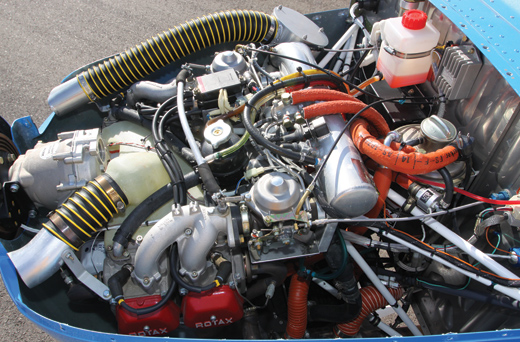
Rotax 914.
It’s fair to say the 912 series—made up of the 912S at 100 hp, the straight 912 at 80 hp and a set of parallel versions with paperwork as “certified” engines—has achieved remarkable maturity. In many respects, the series is the modern equivalent of the Continental O-200 and Lycoming O-235 for its ubiquity. In addition to its low installed weight, the 912 engines have for the last three years carried a 2000-hour TBO (time between overhauls), a significant jump from the previous 1500 hours. In-service engines are eligible for the higher TBO with service-bulletin compliance.
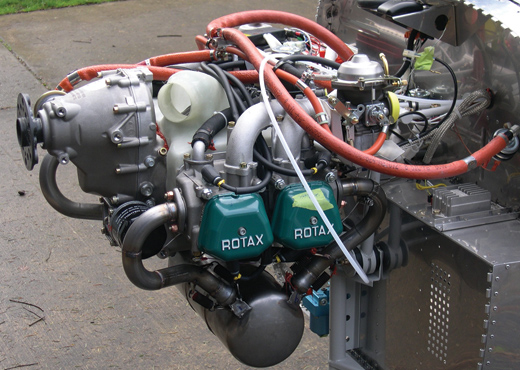
Rotax 912S.
Rotax has continued to evolve the 912 design. In 2011, the company introduced a new mechanical fuel pump. This doesn’t sound like a big deal, but the standard pump had been troublesome in various installations. The pump came new on engines built starting in the summer of 2011.
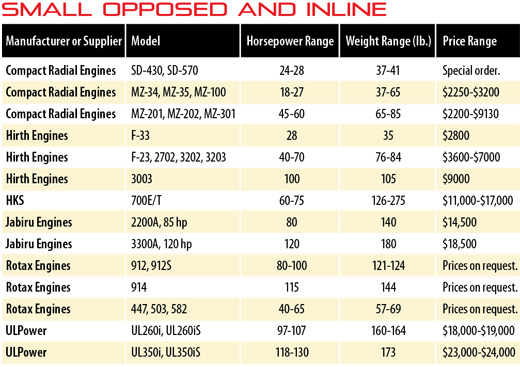
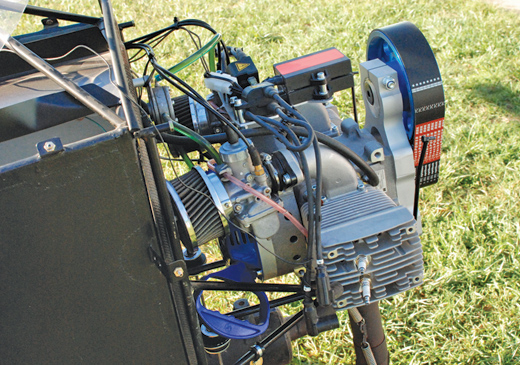
Hirth F-23.
New Kids and Others
Jabiru engines has been steadily tweaking its four- and six-cylinder engines, which span the range from 85 to 120 hp. All are direct-drive, air-cooled engines with a single carburetor, integrated generator/electronic ignition and a simple design philosophy. Detail changes implemented in 2011 include larger cross-shaft bolts in the crankcase, improved upper cylinder lubrication by way of pressurized pushrods, and a new induction plenum aimed at reducing exhaust-gas temperature spread at high power settings.
To increase the economic viability of the engine series, Jabiru USA has continued to develop firewall-forward kits for aircraft originally designed for other powerplants. The most recent of these is a FWF kit for the Van’s RV-12, which has generated a lot of interest.
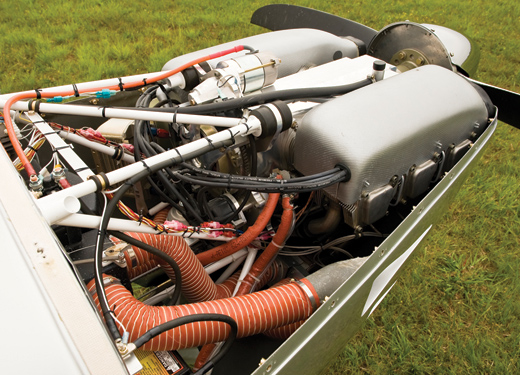
Jabiru 3300.
Another new engine we’ve been following for some time is the UL Power, a design that’s now getting enough hours in the fleet to be helpful in the engine’s refinement. It’s unusual in that the designs—there are currently two basic configurations of four-cylinder engines plus a six in development—come standard with electronic fuel injection and ignition. The UL260i makes 97 hp; the UL260iS, with a higher compression ratio, turns out 107. A larger version, the UL350i starts at 118 hp while the high-compression UL350iS makes 130. All four designs are air-cooled, direct-drive, overhead-valve engines that look just like nicely sculpted traditional aircraft engines. We’ll have a lot more on this engine and an update on the six-cylinder—said to make 220 hp in testing—in an upcoming issue.
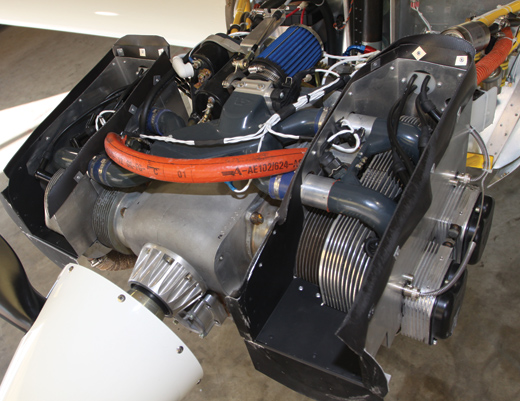
UL Power UL350iS.
Round They Go
Radial engines are really their own thing. Currently the market is strong in the Vedeneyev M-14 series of nine-cylinder radials, with Barrett Precision Engines arguably the leader in both overhauls and development of the engine. Barrett expects to release a new electronic ignition system for the M-14P this year, which will be welcome news to owners who have had to deal with the standard outdated mags.
Rotec in Australia is in production with two radials, the 110-hp R2800 and the 150-hp R3600, and even had the engineering spare time to launch a project involving retrofit liquid-cooled heads for Jabiru engines.

The Landscape
As you can see, the industry-wide slump has caused most engine manufacturers to keep the wallet tightly in hand, spending for development programs only where they make unimpeachable sense. There may well be big spending behind the scenes—and developments like the UL Power are encouraging—but the outlook for traditional engines in 2012 is for a familiar landscape. We’re all looking for a few green shoots.

